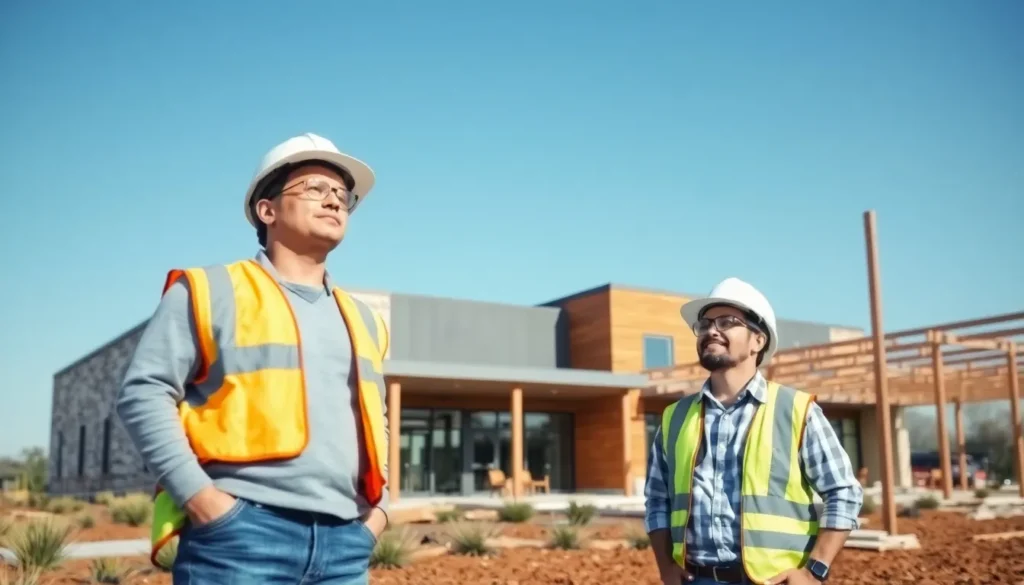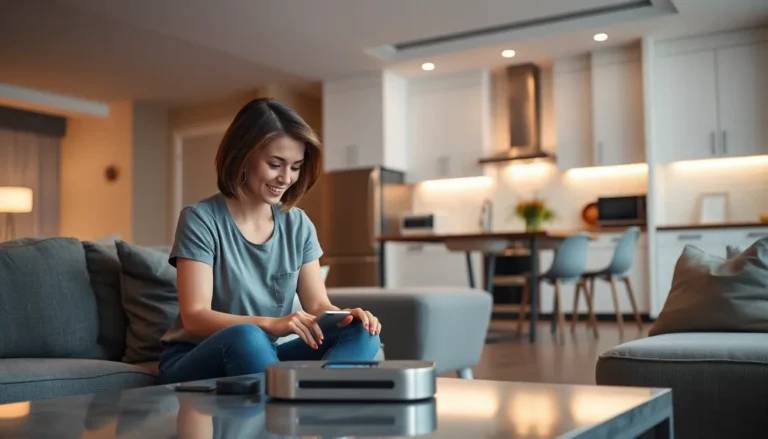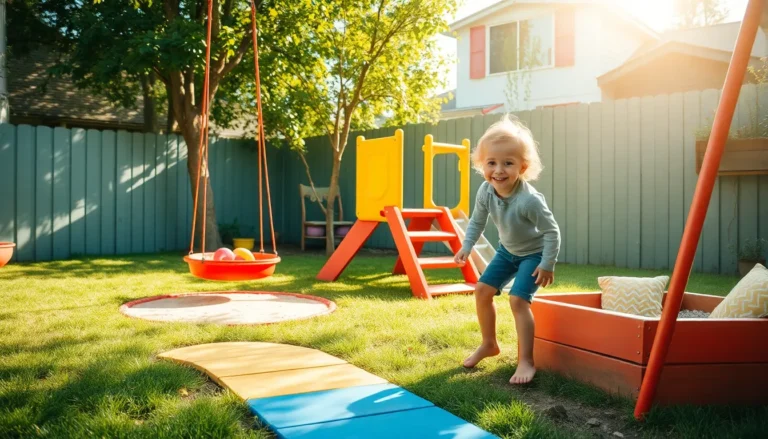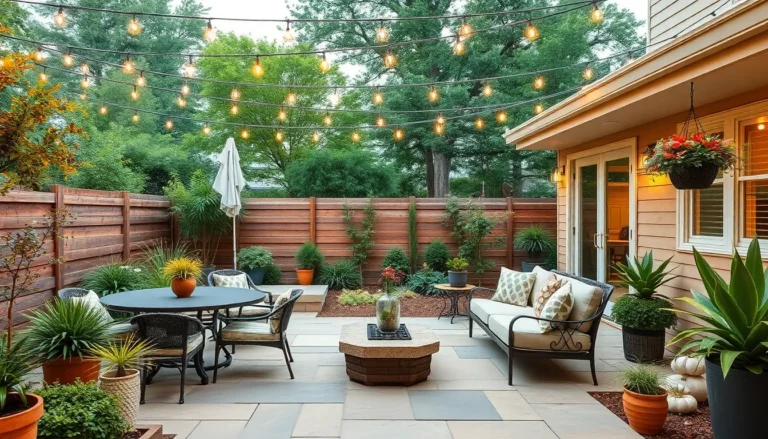When it comes to building construction, Type 3 structures are the unsung heroes of the architectural world. Imagine a sturdy fortress that’s not just built to last but also boasts a charming blend of materials. These buildings, often known as “ordinary construction,” mix non-combustible and combustible materials to create a perfect balance of safety and style.
Table of Contents
ToggleOverview of Type 3 Building Construction
Type 3 buildings, known as ordinary construction, feature a mix of non-combustible and combustible materials. These structures typically consist of masonry, concrete, or steel framework for the exterior, combined with wood or other combustible materials in interior elements. Key characteristics include the tendency toward low-rise configurations, with many standing two to four stories tall.
Fire resistance plays a pivotal role in Type 3 construction. Exterior walls offer a level of protection, while the interior elements may introduce higher fire risks. Building codes often dictate specific regulations that address the management of these risks, ensuring safety standards within urban environments.
Durability marks another significant trait of Type 3 structures. The combination of materials enhances resilience to various environmental factors, contributing to the longevity of the building. Aesthetic appeal stems from diverse architectural styles, which can integrate native materials for visual harmony within the surrounding landscape.
Cost-effectiveness remains appealing in Type 3 construction. Builders can often construct these buildings within budgetary constraints, balancing traditional elements with modern design. This affordability contributes to the popularity of Type 3 buildings in both residential and commercial sectors.
Type 3 construction stands as a practical choice for many developments. Its blend of materials, durability, fire resistance, and cost benefits combine to make it a favored option in the construction industry.
Key Features of Type 3 Construction
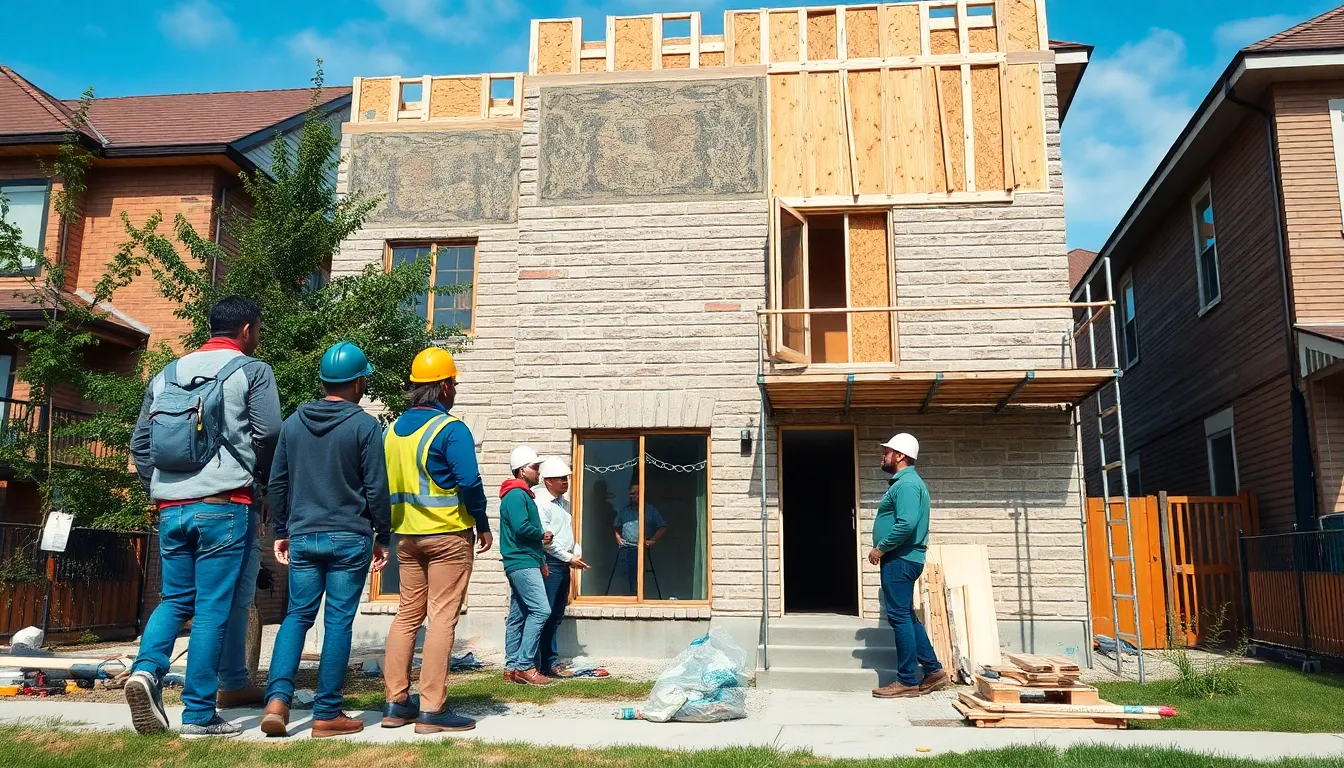
Type 3 construction features a mix of materials and structural elements that contribute to its durability and aesthetic appeal.
Materials Used
Type 3 buildings utilize both non-combustible and combustible materials. Commonly, masonry, concrete, and steel serve as the exterior frameworks. In contrast, wood and other combustible materials often make up the interior finishes. This combination offers a balance between strength and design flexibility. Local materials may also enhance both sustainability and visual variety. Additionally, the use of diverse architectural elements creates unique styles tailored to various environments. The blend of materials is not only functional but adds character to the overall look of the building.
Structural Elements
Structural elements in Type 3 construction include walls, roofs, and floors designed to support the building’s integrity. Exterior walls typically consist of non-combustible materials, ensuring fire resistance. Conversely, interior supports can incorporate wood, which may contribute to overall aesthetics. Roofs often feature lightweight materials that allow for better energy efficiency. Additionally, the design permits easy modifications and expansions, accommodating changing needs over time. This adaptability is one reason Type 3 structures remain popular for both residential and commercial uses.
Advantages of Type 3 Building Construction
Type 3 building construction presents several advantages that make it a preferred choice for many projects. These benefits include cost-effectiveness and design flexibility.
Cost-Effectiveness
Type 3 buildings often utilize a blend of materials, which significantly reduces construction costs. Utilizing local materials can further lower expenses while enhancing sustainability. Labor costs remain manageable due to straightforward construction techniques. Many builders appreciate the minimized need for expensive fire-resistant materials in the interior, balancing affordability with safety. Combined, these factors contribute to a lower overall investment, making Type 3 a viable option for both residential and commercial developments.
Design Flexibility
The design possibilities associated with Type 3 construction are extensive. Architects frequently leverage the mix of non-combustible and combustible materials for innovative designs. This allows for various architectural styles that cater to diverse aesthetic preferences. Many projects can incorporate unique interior finishes without sacrificing safety. Easy modifications and expansions keep pace with evolving needs, ensuring long-term usability. Additionally, the ability to alternate materials lets builders create visually appealing structures that reflect local culture and environment.
Common Applications
Type 3 buildings serve various applications in both residential and commercial sectors. This versatility highlights their importance in modern construction.
Residential Buildings
Residential buildings often utilize Type 3 construction due to their balance of strength and design options. These structures accommodate homes ranging from single-family dwellings to multi-family units. Common materials include masonry for exterior walls and wood framing for interiors, offering durability and aesthetic diversity. Homeowners appreciate the cost-effectiveness of these buildings, as integrating local materials reduces expenses. Energy efficiency is enhanced through lightweight roofing materials, contributing to lower utility bills. Architects frequently design unique layouts, ensuring that homes reflect the tastes and needs of families.
Commercial Spaces
Commercial spaces increasingly adopt Type 3 construction for various business types. These structures typically serve retail, offices, and mixed-use developments. The robust framework allows for open layouts, which are ideal for accommodating different tenant requirements. Fire-resistant features in materials meet safety regulations while maintaining low construction costs. Integrating local resources helps reduce the environmental footprint and supports the community. Versatile architectural styles are possible, catering to diverse business branding needs. Businesses benefit from the adaptability of these spaces, allowing easy modifications for future expansions.
Challenges and Limitations
Type 3 building construction faces several challenges that impact its implementation. Fire safety remains a primary concern due to the presence of combustible materials in interior finishes. Builders must adhere to strict fire codes, which can add complexity to the design and construction process.
Durability checks are essential for Type 3 structures. Varying quality of materials can lead to discrepancies in long-term performance. Building teams often need to source high-quality local materials to ensure structural integrity and withstand environmental conditions.
Maintenance requirements can be demanding. Regular inspections are necessary to manage wear and tear on wooden interior elements. Owners may incur additional costs for routine upkeep and potential renovations.
Design limitations may also arise. While Type 3 structures offer aesthetic flexibility, intricate designs can complicate construction. Architects must strike a balance between creativity and structural efficiency to avoid extending timelines and budgets.
Cost considerations play a significant role in decision-making. Although Type 3 construction is generally cost-effective, unexpected expenses can surface during the building phase. Contractors must prepare for potential fluctuations in material prices, especially in tight markets.
Regulatory hurdles often complicate the construction process. Navigating varying building codes across jurisdictions can pose challenges. Staying compliant with fire safety and zoning regulations requires careful attention to detail and planning.
Ultimately, these challenges can influence the feasibility of Type 3 construction projects. By addressing fire safety, durability, maintenance, design constraints, costs, and regulations, stakeholders can better manage risks and ensure successful outcomes.
Best Practices in Type 3 Construction
Prioritizing fire safety remains essential. Implementing fire-resistant materials in interior designs significantly reduces risks. Adhering strictly to established fire codes is necessary for compliance and safety in Type 3 buildings. Conducting regular inspections helps identify potential hazards early, ensuring the longevity of wooden elements.
Utilizing local materials is advantageous. Incorporating native resources lowers transportation costs and supports local economies. Ensuring all materials meet quality standards enhances durability and reduces maintenance needs. Sourcing high-quality materials prevents deterioration and structural issues in the long term.
Optimizing structural design requires attention. Architects should focus on flexibility to accommodate future changes easily. Creating open layouts promotes adaptable leasing options in commercial spaces. Simplifying intricate designs can facilitate construction efficiency without sacrificing aesthetics.
Involving skilled professionals is crucial. Engaging architects experienced in Type 3 construction can streamline the design process. Collaborating with contractors familiar with local regulations ensures compliance with building codes. Establishing clear communication among all stakeholders promotes transparency and successful project outcomes.
Addressing cost considerations effectively improves overall project management. Developing a detailed budget that factors in unexpected expenses leads to better financial planning. Allowing contingencies for labor and material fluctuations prepares for potential market challenges. Continuously monitoring expenses throughout the building process keeps projects on track and within budget.
Overall, following these best practices enhances fire safety, material quality, cost management, and design efficiency in Type 3 construction.
Type 3 building construction stands out for its unique blend of durability and aesthetic appeal. By combining non-combustible and combustible materials, these structures offer a practical solution for both residential and commercial applications. Their adaptability allows for creative designs while maintaining safety and cost-effectiveness.
However, attention to fire safety and material quality is essential to ensure long-term performance. Engaging skilled professionals and adhering to local regulations can significantly enhance project outcomes. As the construction landscape evolves, Type 3 buildings will continue to play a vital role in meeting diverse needs, making them a preferred choice for many developers and architects.

